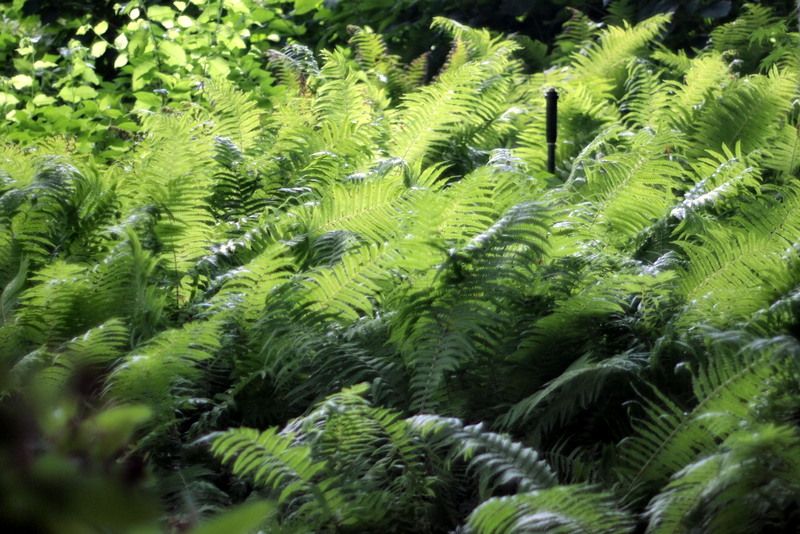
Since returning from touring gardens and nurseries in Portland last week, I’ve been haphazardly researching what makes the Pacific Northwest so full of great gardens and nurseries. Not expecting any definitive answer, just scrounging around for clues. Portland’s enviably soft light at 45 degrees latitude that famously attracts painters and glass artists is one clue. And to account for sheer creativity, I found assorted oddball theories, including one on the geography of personality, which shows the entire West Coast of the U.S. coming up strong in “openness,” which “reflects curiosity, intellect, and creativity at the individual level,” and registering low in neuroticism. (California comes in slightly more neurotic than Oregon and Washington, with the East Coast taking the prize for most neurotic.)
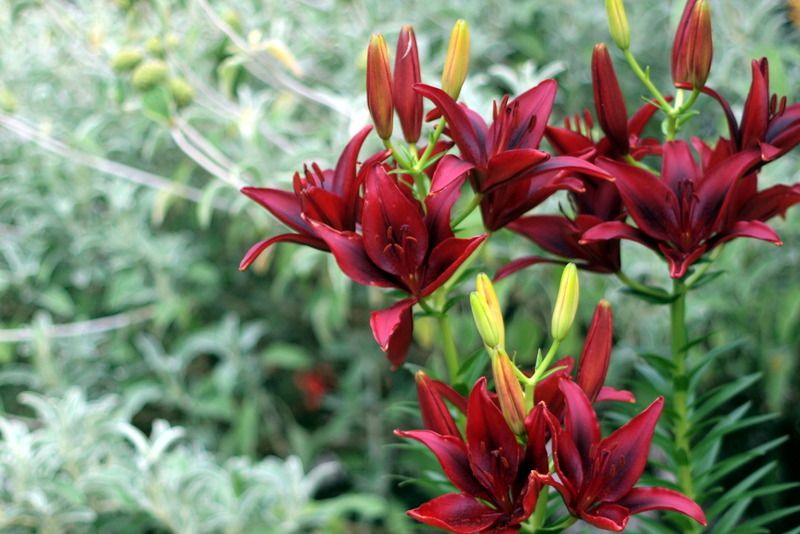
And then there was the crackpot hucksterism of Erwin L. Weber, paid for by the Seattle Chamber of Commerce in 1924 to encourage settlement in the Pacific Northwest and woo development away from California: ““Filtered sunshine — sunshine filtered thru the clouds — and only a moderate degree of intense sunshine, as exists in the Pacific Northwest, is best for all, and vital to the development of the most energetic peoples…Intense and prolonged sunshine, as exists in the greater portion of the United States is detrimental to the highest human progress. History abounds with the annals of peoples who built up empires and civilizations under the temporary stimulus of intense sunshine. But this same intense sunshine later broke down the stamina and resistance of these peoples, thus causing the fall of their empires and the decay of their civilizations.” (In the Zone of Filtered Sunshine) In his sunshine-is-destiny theory, Mr. Weber appeared to believe it was the strong sun and not the Visigoths that brought down the Roman empire.
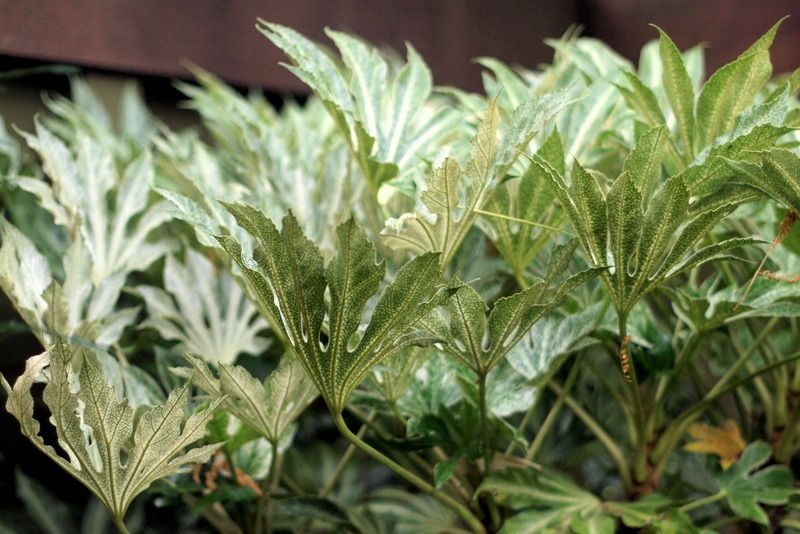
Fatsia japonica ‘Spider’s Web’ was seen in quite a few of the gardens, a plant that needs to be widely available in Los Angeles.
Weeding through a lot of apocryphal stories and wacky theories is an entertaining byproduct of high-speed Internet, but it invariably leads to a condition that This American Life contributing editor Nancy Updike describes as “Modern Jackass,” which involves expounding at length on a topic about which the speaker actually knows very little. So I’ll stop with the crank theories. Because there is one indisputable, geologic source of all that splendor: the spectacularly fertile Willamette Valley, which stretches from Eugene at its southern end to Portland at its northernmost. As far as I can tell from my admittedly superficial (Modern Jackass) inquiry, this valley was scoured and tumbled by massive ice movements, then filled and refilled with water up to 50 times, when enormous silt deposits were built up, leaving an astonishing depth of loam known as the Willamette silt:
“During Pleistocene time, large-volume glacial-outburst floods, which originated in western Montana, periodically flowed down the Columbia River drainage and inundated the Willamette Lowland. These floods deposited up to 250 feet of silt, sand, and gravel in the Portland Basin, and up to 130 feet of silt, known as the Willamette Silt, elsewhere in the Willamette Lowland.” — from “Influence of the Missoula Floods on Willamette Valley Ground Water.”
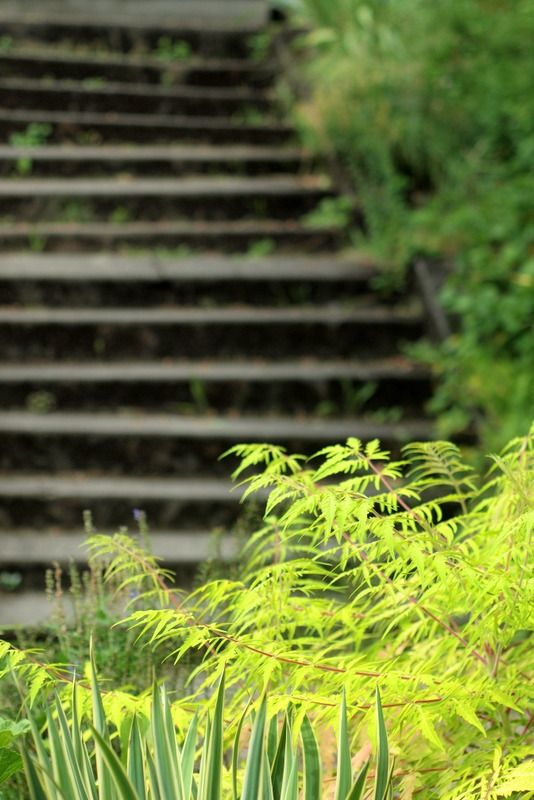
Great nurseries are the keystone for supporting a vibrant garden culture, and the Portland area is blessed with dozens of wonderful nurseries, including the three we saw on the tour: Pomarius Nursery, where we had the pre-tour cocktail party, Cistus Nursery, to which I’ve made several pilgrimages in years prior to the tour, and Joy Creek Nursery, also previously visited with friends a few years ago. (The last two have mail-order catalogues, by the way.)
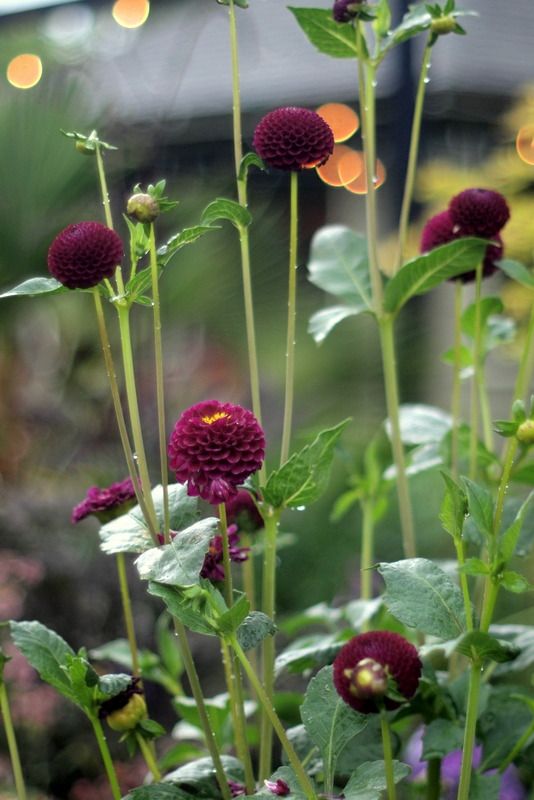
Commercial dahlia growers beautifully exploit the Willamette silt. Hops grow well here, too, supporting all those microbreweries.
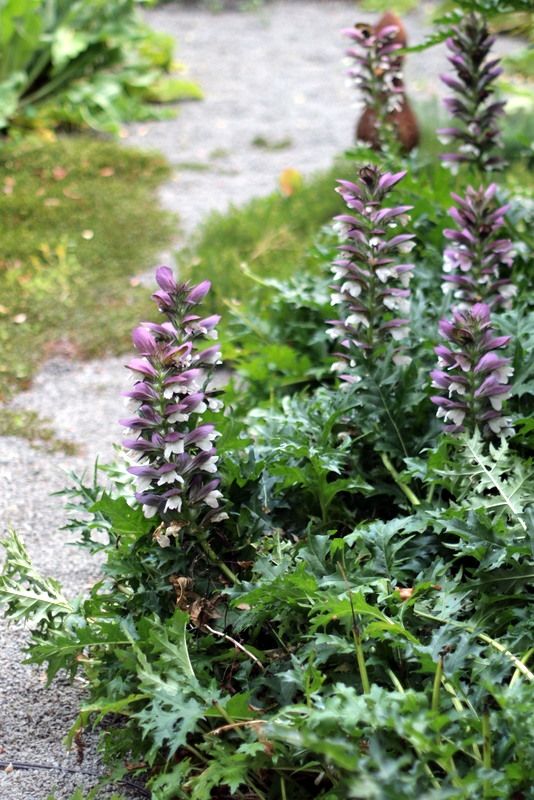
About 70 miles inland from the coast, Portland can get hot in summer. It can and it did. A couple days over 90 were outright sweltering.
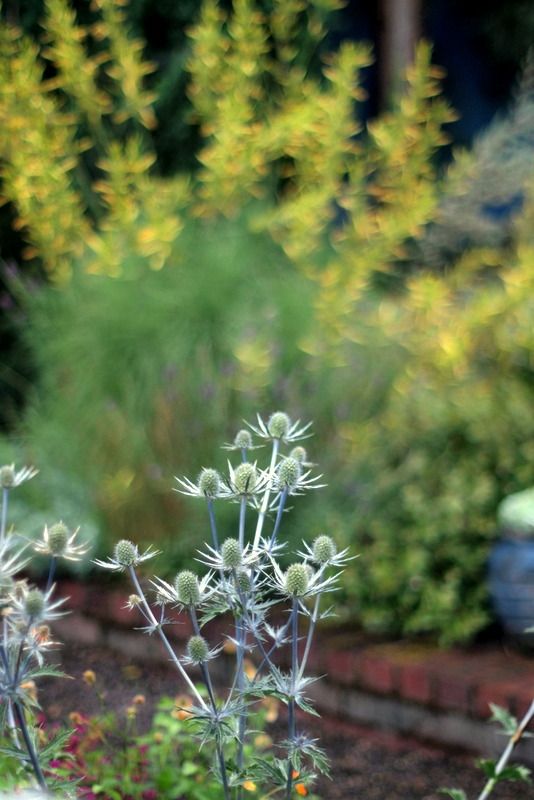
But generally Portland’s climate brings warm, dry summers and chilly, damp winters.
Fluctuating warm/cold spring temperatures keep the gardeners sharp and the nurseries busy.
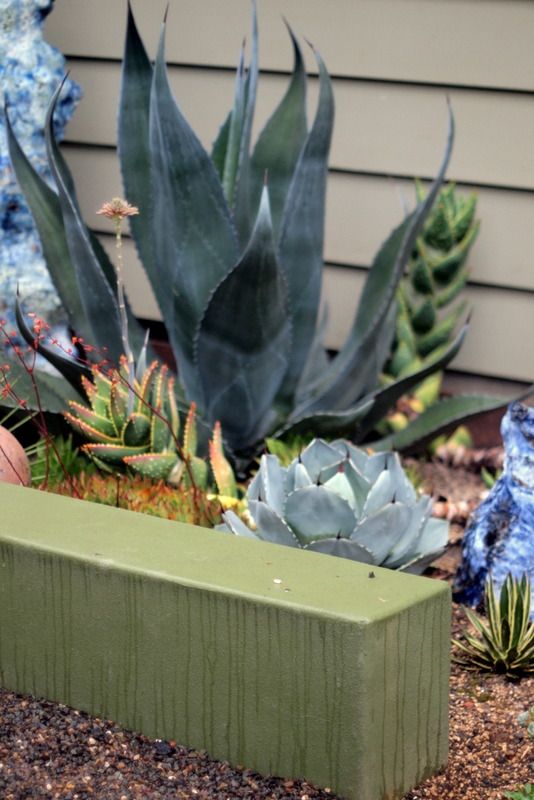
An occasional colder-than-average winter can bring sad losses, but all the gardens we toured were fearless in pushing zones.
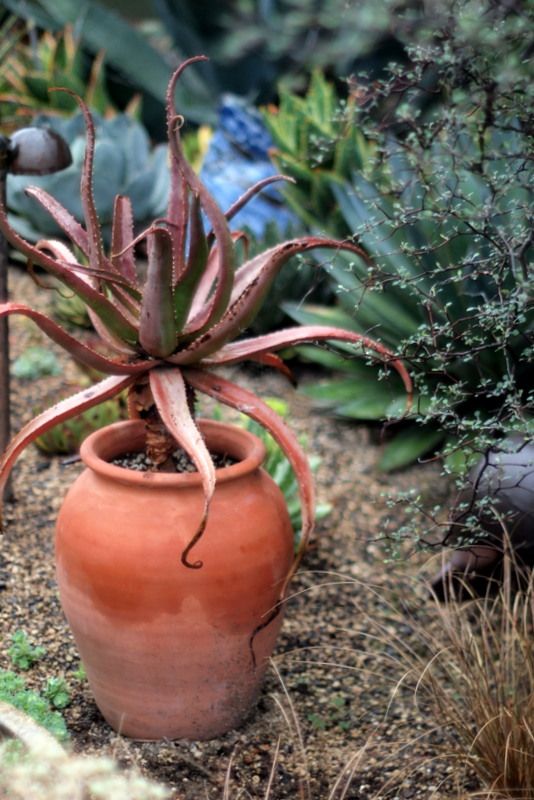
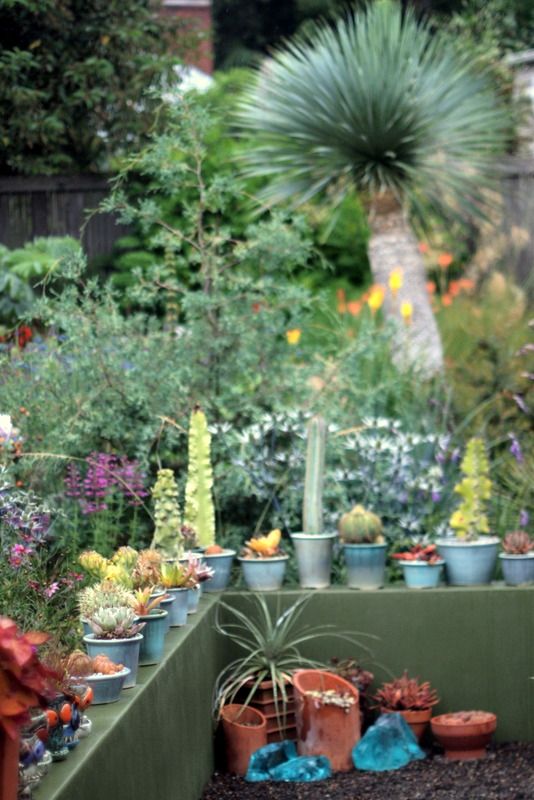
Coddling tender plants has been turned into an art form by Portland gardeners.
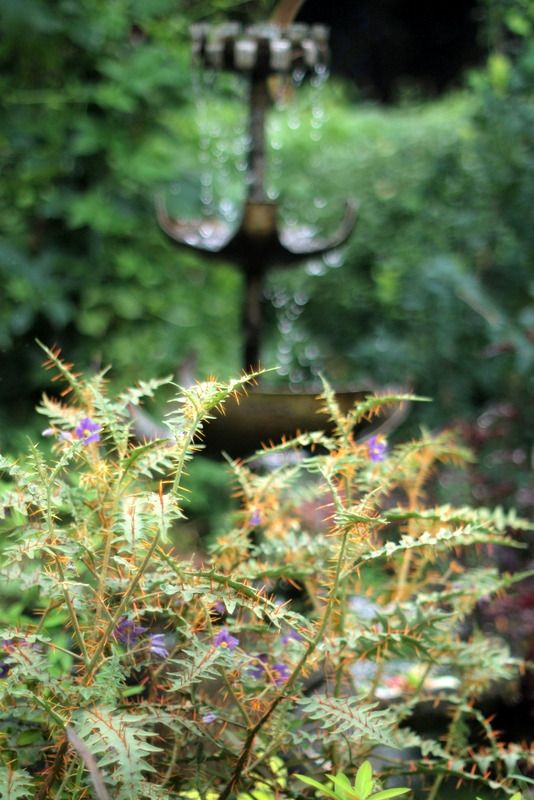
Heading into Portland from the airport, my seat mates on either side of me on the MAX were respectively (a) attending the World Domination Summit and (b) a conference on plant biology.
From the outset, I knew the next few days were going to be interesting, and the exuberant, plant-rich gardens of Portland never let up off the throttle.
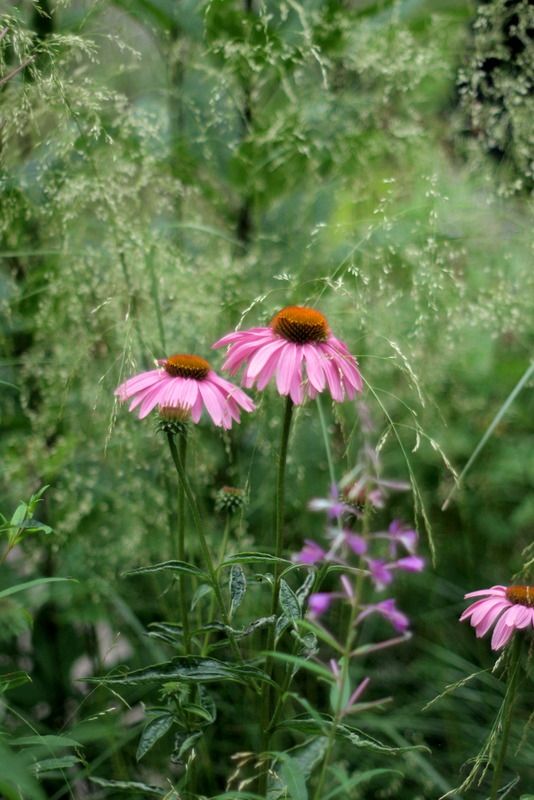
(And now a word from the 2014 Garden Bloggers Fling sponsors, who can all be found here. These sponsors and the volunteer planners make the Fling one of the best garden tours around.)
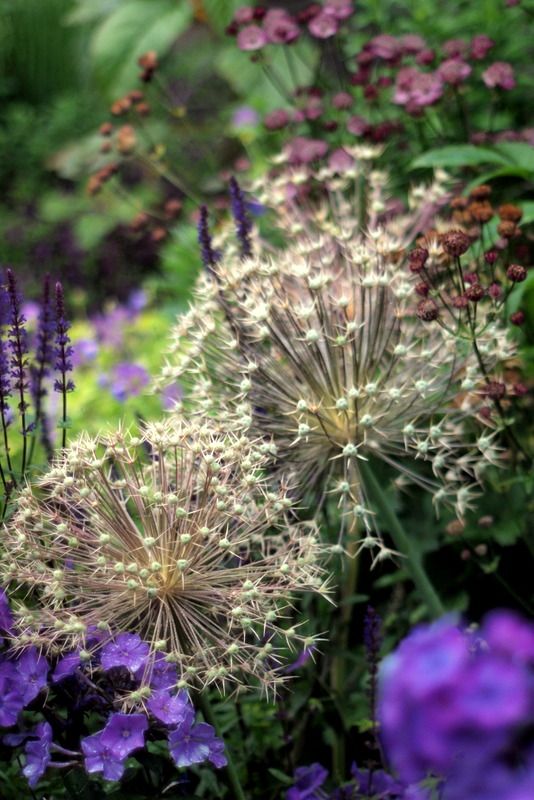
More on Portland’s gardens to come.

Fascinating post, thank you!
I never knew until now that much sunshine can be bad for you, apart for the skin that is 😉 it was great to meet you Denise and Portland is a wonderful place so conducive to a wealth of gardening pursuits.
Stunning photography in this post!
Great post Michelle!!! Love the term “Modern Jackass” I’ve run into a few of them myself. Now I feel doubly bad as this is the second opportunity I’ve missed to tour PNW gardens. I need to get off the East Coast at some point, LOL… Lovely photography and insights.
@RD, if you haven’t visited Portland I hope you get the chance.
@M&G, it was such a great time and pleasure meeting you both in Portland.
@Deanne, so funny with the “Michelle”! I know who you’re thinking about, and I wish I was that nice! So strange, that seems to be my default name. My mom’s second choice for a name for me, and the neighbors call me Michelle cuz I look like a Michelle down the street. And most definitely we need to do another PNW tour!
Oh how I wish I had some of that Willamette silt, instead I get the standard Portland clay with soil stains on my garden clothes to prove it.
Keen observations–I did notice the light was softer–it was possible to get an acceptable photo in noon light, that is impossible to get here.
Missoula called–they want their silt back.
@Loree, Scott said his was clay too. Maybe Joy Creek has it all.
@Hoov, I was amazed, as hot as it felt to me, to see stuff I could maybe grow in the shade standing up to full sun. It’s all about the latitude.
Beautiful photos!
Ha…well, as Fling Weekend proved, we do still get some toasty days! I’m a lover of cool, overcast days…and that’s what drew me to Portland…so I tend to feel a little cheated when it’s hot and sunny 😉 Of course, this weekend it was wonderful and cool…we didn’t even turn on the A/C at all yesterday…it was divine (and I kept thinking…if only the Fling was THIS week! So glad to see you again Denise…hopefully I’ll see you next year in Toronto!
When shall we start building our filtered sunshine empire? You found some interesting information but I think that it’s just so darned easy to garden in the PNW compared to so many other parts of the country that people simply engage in the activity more. Nothing like positive reinforcement to cement a behavior. It was good to see you again at the fling!
Denise! What a joy to have you in Portland for the Fling…great photos and lovely insight into the light of Portland and your impressions….we are very lucky to live here, but some of us (Danger Garden??), myself included LOOOOVE all that California sunshine. Thanks for bringing it up with you! And what Peter said…we are all gardeners of some kind and we are enablers, too 🙂